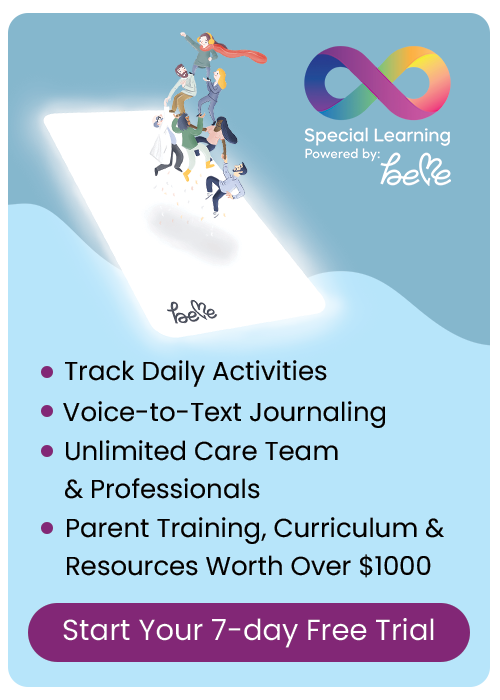Blog Categories
- ADHD
- Applied Behavior Analysis
- Autism Awareness
- Autism Service Providers
- Case Studies
- Dignosis
- Classroom Management
- Credentials
- Ethics
- Family Matters
- FAQs About LIVE Events
- Financial Planning
- Holiday Planning
- IEP's
- Panelists
- Private Equity in Autism & ABA Industry
- Psychopharmacology
- Sensory Processing Disorder
- Speech and Communication
- Subject Matter Experts
- Summer Planning
- Transition Planning
Preparing to Welcome a Child with Autism: A strategy Guide
She received her Master’s degree in Applied Behavior Analysis from Columbia University Teacher’s College and has been working with students with special needs for over 10 years, specializing in working with children on the Autism Spectrum, as well as teaching language and social skills to students of all ages. Tamar is currently practicing in Europe and providing BCBA and ABA supervision services to families in the US via Skype.
Preparing to Welcome a Child with Autism: A strategy Guide
Autism Spectrum Disorder (ASD) is a neurological disorder that affects communication, social skills, and behavior. In the US, about 1 in 68 children are diagnosed with ASD. With statistics like this, most teachers, doctors, caregivers, and foster families will likely provide services and homes for children with autism. Individuals with autism are at high risk of having severe anxiety, especially when they experience changes in their environment and daily routines. This guide will help prepare you for welcoming a child with ASD into your home and provide useful strategies to make the transition as smooth as possible.
Applied Behavior Analysi(ABA) is a scientific approach to understanding behavior and how it is affected by the environment. At this time, ABA therapy is the only research-based methodology proven effective for children with Autism and is endorsed by the U.S. Surgeon General. ABA can be used effectively for all individuals and in any setting, whether one-on-one or in a group setting. ABA focuses on first building a positive association between the individual with autism and the caregiver and their environment. Main components of ABA therapy include building routines and consistency into daily life, using assistive communication methods, consistent consequential strategies and reinforcement, and modifying the environment for the benefit of the individual with autism. ABA intervention as a program should only be conducted by individuals with an ABA certificate or RBT training, under the supervision of a BCBA. However, many parents find that using the principles of Applied Behavior Analysis can help build compliance and decrease anxiety in their children.
Before the transition begins, it is best to prepare the child with autism for the transition by explaining exactly what will take place. Social Stories are a great way to begin the transition process. You can buy a social story about moving to a new home or create one using child-specific information and pictures. You can add pictures of the child’s current home and the home they will be moving in to, as well as pictures of their new room and bed. In autism interventions, social stories are widely used to teach children about new or unfamiliar and anxiety-producing scenarios or environments. They can be used for everyday routines like getting ready for school or for rare occurrences such as moving. Social stories should be read frequently leading up to the event being described, and then discussed with the child after reading the story. Be sure to allow the child to ask questions and express feelings about the event.
Pairing is the process of establishing yourself or other aspects of the environment as a positive reinforcer (something fun and exciting) by associating or “pairing’ it with already established reinforcers. This process can lead to compliance as well as a more pleasant experience for both you and the child. A simple tip to applying this autism intervention tactic is to engage in a fun interaction, preferably with an item/activity that they only have access to when you are with them. If you can begin pairing with the child before the move occurs, this will help alleviate some of the anxiety they may feel regarding the move.
Applied Behavior Analysis heavily relies on positive reinforcement for behavior change and building relationships. Punishment is used only as a last resort in autism intervention. Systems of reinforcement are used to provide consistency and structure for children with autism. Knowing when they will be able to access their favorite toy or activity helps alleviate some anxiety and rigidity that is commonly felt by individuals with autism. Some examples of reinforcement systems include sticker charts, token systems, and contracts. By using their familiar system of reinforcement, or creating a system if none has been in place, you can help build trust and rapport with the child right from the start.
It is estimated that almost 25% of individuals with autism are non-verbal or have severe communication deficits. Many of these individuals benefit from assistive or augmentative communication, including sign language, picture-based systems, and voice-output devices. If you can learn about your child’s current method of communication prior to their move, you will be better prepared to communicate effectively with them and understand their needs and wants. One of the most common forms of assistive communication is with the use of pictures. Pictures can also be effectively used to help an individual with autism understand the schedule of events that will occur during their day. Creating a daily picture schedule not only helps the child better understand their daily schedule, it provides a consistent routine that they can become familiar with, which will in turn decrease any anxiety of uncertainty they may feel.
When anxiety and frustration do occur, it can be difficult for an individual with autism to regulate their emotions. This can lead to behavioral outbursts. While emotion regulation skills can take a long time for a child with ASD to master, there are some effective tools that can be used to help promote emotion regulation and calming. Providing a safe space for the child to go and be upset or angry will teach them that while everyone gets angry sometimes, they need to have some control over their emotions. In moments when they are upset, guiding them to the safe space will allow them to work through their emotions and calm down in their own time. Ideally the space should be child-proof, quiet, and away from others. Providing a small space with a comfortable seat and lower lighting will provide a relaxing environment to calm down.
During times when the child is calm and ready to learn, teaching emotion regulation strategies will help get through future frustrations quicker. With younger children you may have to begin by teaching them about their emotions by describing each emotion and how that emotion feels and looks like. Once they understand emotions in general, you can teach them to identify their own emotions. Using emotions flash cards and charts can help the teaching process since most kids with ASD are visual learners. Teaching therapeutic breathing, child/home specific responses to various levels of emotions, and asking for help can all be greatly beneficial to the child and family.
Using these and other ABA strategies will help the child with ASD transition smoothly to your home and help you be successful in your parenting. If difficulties arise, seek out help from a BCBA, RBT, or other individual with ABA training and an autism certification.
RECOMMENDED PRODUCTS
Build Your Own CE Library – Gianna Apicella (20 CEs)





